Naval Aviation is a small club. As it should be. Here’s a great write up of the experiences of Paco and his experiences with the A-6 Intruder.
This guy flew “shake n’ bakes” in pursuit of “crispy critters”. Or at least that’s what we used to call it decades ago… “in the day”…
It's a great read. All credit to him for his autobiography, note that this was edited to fit this venue. The original article was found on The War Zone.
Confessions Of An A-6 Intruder Pilot
Strap in alongside veteran pilot Francesco “Paco” Chierici for a trip back in time when A-6s still rocketed through canyons in the black of night.
It may not be as well known as its maker’s point-nosed, swing-wing counterpart, the F-14 Tomcat, but Grumman’s A-6 Intruder was also a movie star and served as the backbone of the carrier air wing’s all weather, deep strike capability for decades. The all-business A-6 was capable of doling out a very heavy punch far from its home at sea and it was most at home down low, deep in the weeds, barrelling through enemy territory under the darkness of night.
One A-6 pilot, Francesco “Paco” Chierici, flew the blunt-nosed attack jet during the twilight of its career and is about to share exactly what it is like to strap into the ‘flying drumstick’ and take it over hostile territory, down deep and dark ravines, and into the history books as it began to fade from the Navy’s inventory once and for all.
Paco’s experiences at the controls of the Intruder are especially noteworthy as he would go on to fly higher-performance aircraft, transitioning into the F-14 and later becoming an aggressor pilot in the F-5—areas we will discuss in part two of this series. So, suffice it to say, with thousands of hours in fast jets, Chierici has plenty to compare the A-6 to.
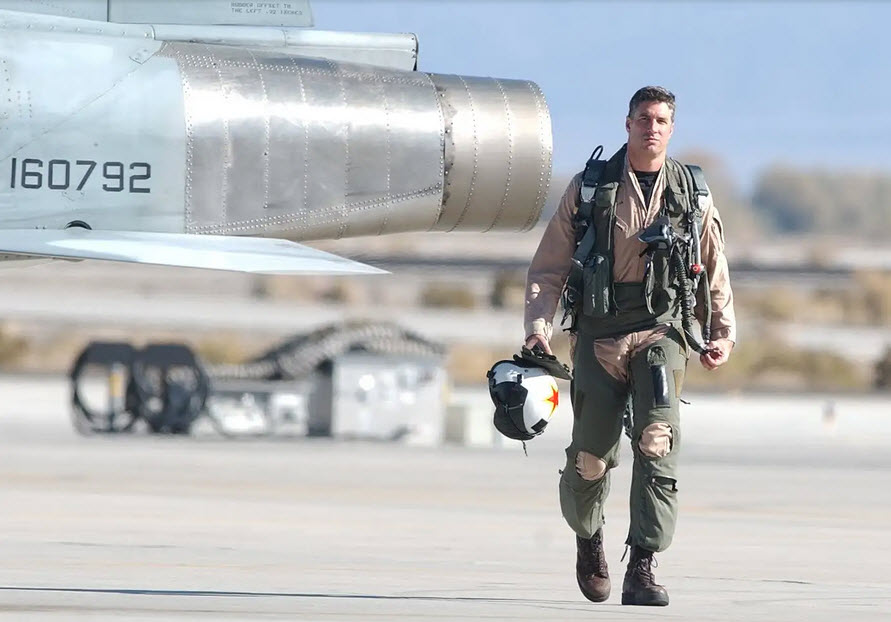
Paco has thousands of hours in fast jets, with the A-6 being the first fleet aircraft he was assigned to fly.
This tell-all feature also comes just as Paco released his first novel, Lions Of The Sky. If what you are about to read is any indication, his novel should be outstanding and we look forward to reviewing it soon.
So, without further ado, let’s climb the intakes and step into the side-by-side cockpit of Grumman’s legendary deep strike phenom, and launch on alongside Paco on a ride to remember.
So ugly you had to force yourself to be fiercely proud of it
I’ll never forget the first time I walked up to an A-6. It was huge compared to the TA-4 Skyhawk jet trainer I had most recently flown. Nearly three times heavier. Two engines, versus one. Whereas the TA-4 was sleek and spindly on its tall landing gear, the Intruder was beefy and serious. The TA-4 looked nimble, the Tomcat was movie-pretty, the Intruder looked like what it was—a war club.
The cockpit of the Intruder was radically different as well. The visibility over the big bulbous nose wasn’t as good as the Skyhawk, but the side glass went all the way down to my hip. It was insane, you could practically see underneath the plane without even rolling.
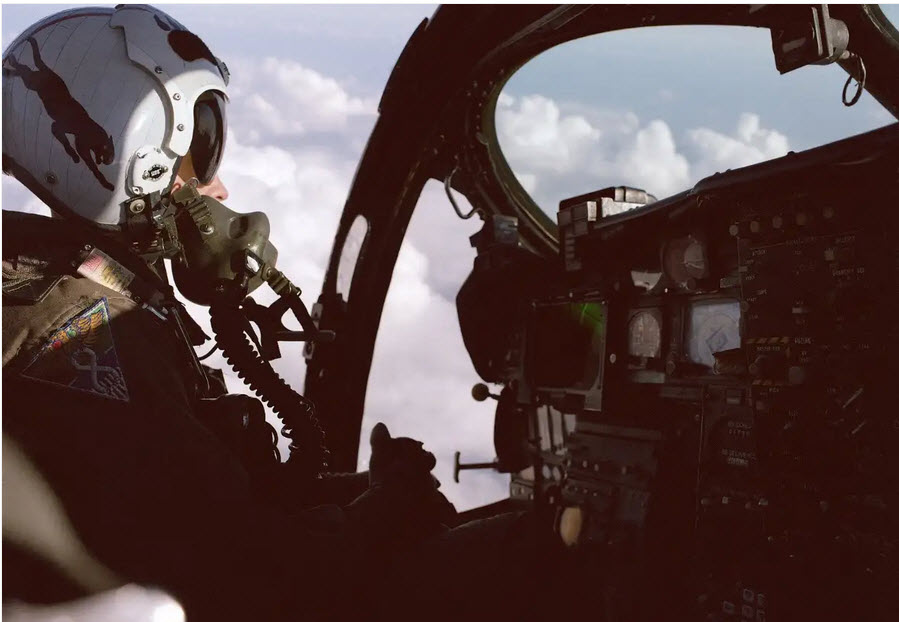
The instrument panel was much more serious, as well. It was absolutely filled with screens and switches. It was clearly a huge step up from the trainers I’d spent the last few years mastering. Now it would be less about the flying and more about the mission.
The biggest difference in the Intruder cockpit was the seat to my right, though. The Bombardier/Navigators (BNs) sat just below and aft of the pilot, but basically beside us. It was initially irritating to give up half of the cockpit, sacrificing visibility and primacy, to the BN, but I soon discovered that the camaraderie in that cockpit was unlike anything I would ever experience again. We would literally high-five after rolling off-target and spotting the bomb hit.
It was awesome.
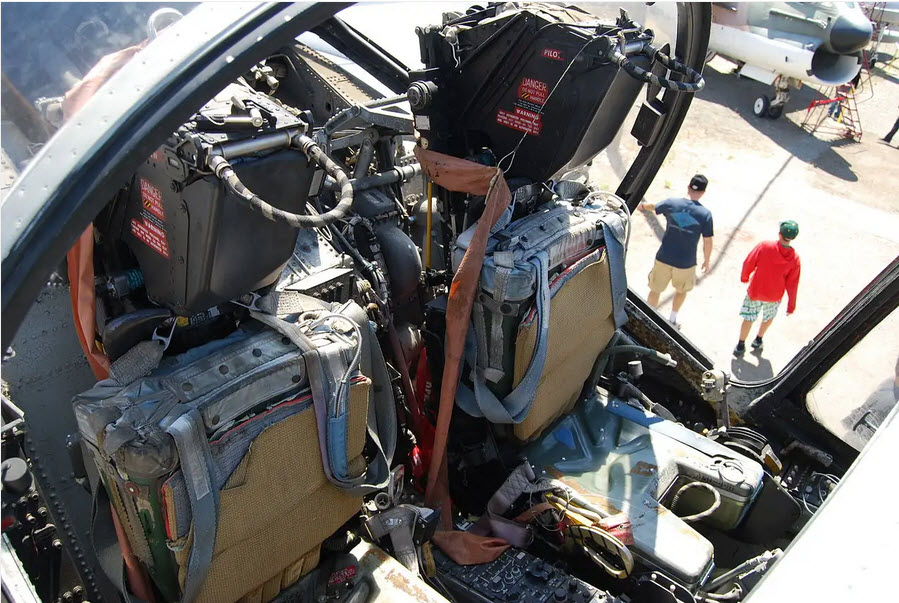
The Intruder’s unique side-by-side seating layout
One of my favorite stupid-pilot tricks was asking the BN to check the right side just before coming into the overhead break. While he was looking out, I would disconnect his G-suit hose just before break-turning at 6.5Gs. I got Gradymon Hackwith to pass out a couple of times. He would punch me in the arm until I rolled into the groove and he was forced to let me fly the ball to landing.
I would be laughing so hard there were tears.
The exterior of the Intruder was dominated by its giant nose. The plane was quite obviously built around the enormous terrain-following radar. We also had an extremely prominent refueling probe permanently jutting out from where the radome met the lower part of the windscreen.
The plane was kind of like a bulldog, so ugly you had to force yourself to be fiercely proud of it.
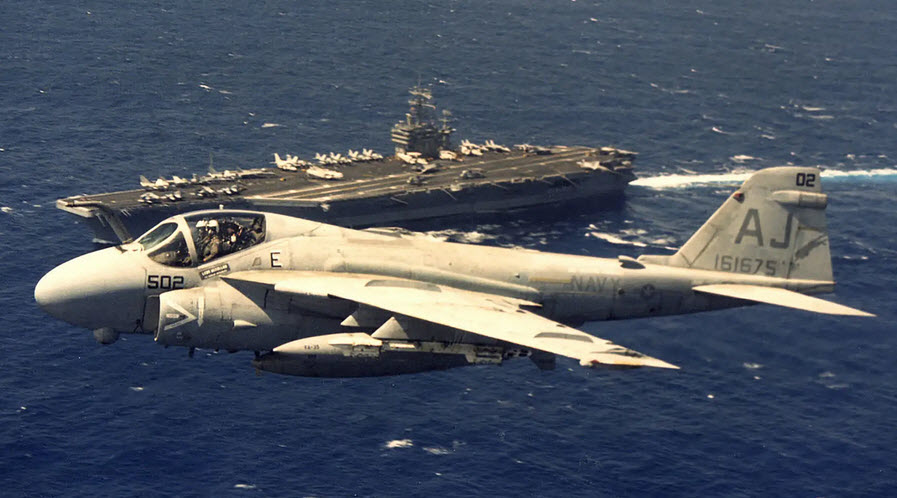
A heavy hitter
One of the great things about the Intruder was its punch. During its heyday, it was second only to the B-52 in payload. That was remarkable because she was only 54 feet long with a wingspan of 53 feet, as compared to the BUFF, which is 159 feet long and 185 feet wide. Also, she was launching off of a 1,100-foot carrier, whereas the BUFF rumbled down a two-mile runway before it was able to claw itself into the sky.
Without any modifications, the A-6 could carry 28 MK-82 500-pound bombs. If the gear doors were removed, it was an even 30. That was 15,000 pounds of ordnance on a plane that only weighed 27,000 pounds empty. Fill her up with gas and we were launching off the deck in 300 feet, zero to 160 knots, at 60,000 pounds of gross weight.
That was quite a ride.
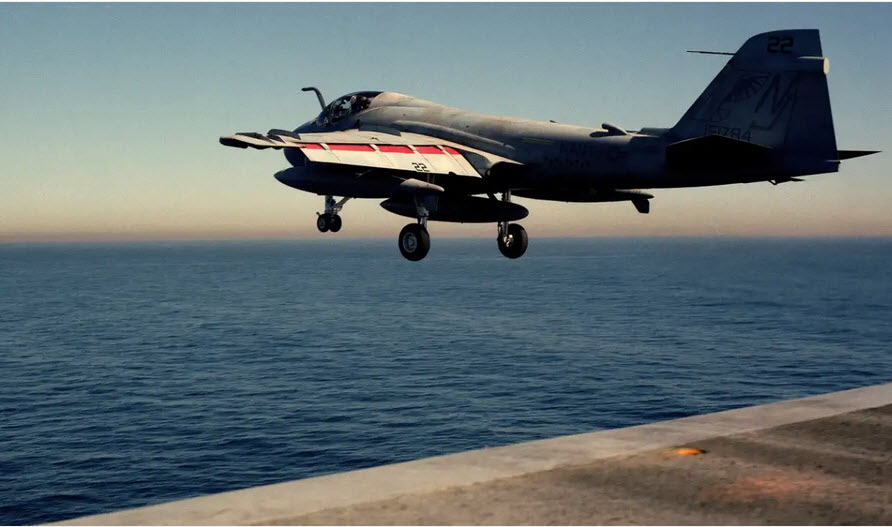
One of the advantages of having such an aerodynamically challenged airframe was that she didn’t handle much differently fully loaded than when she was clean. Alright, that’s a bit of an exaggeration, but in all honesty, she was a dream to fly low, fast, and laden with weapons.
The wing root, where the wing attached to the fuselage, was enormously thick. We could fly all day (and night) with a serious bomb load-out at low-level and pull five Gs or more. The Intruder was impervious.
The addition of the FLIR (Forward Looking Infrared) pod—which happened well before my time—enabled the A-6 to transition from a mere heavy-hitter to a precision striker. Whereas before there were two basic modes of delivery, the pilot doing a visual dive and the BN using the radar to drive the plane to a bomb release point, the FLIR introduced a level of precise aim-point fine-tuning that was completely unique at the time.
In the target area, the BN would transition from the radar picture to the FLIR. Using the laser and the crosshairs in the FLIR picture he would fine tune the information the pilot used to arrive at the proper delivery point. Those capabilities enabled the Intruder to precisely deliver iron bombs and laser-guided bombs in almost any weather conditions and at night.
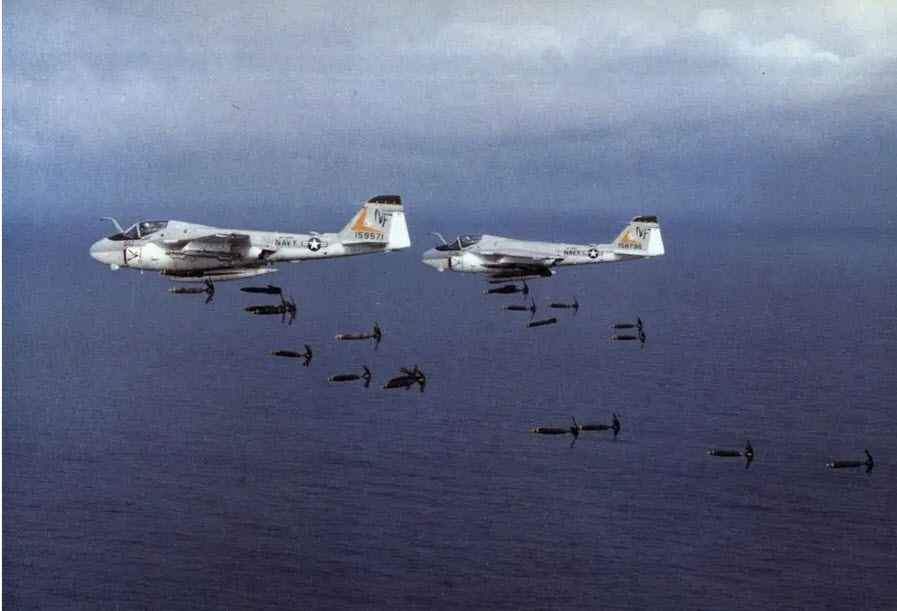
A-6Es releasing thousands of pounds of Mk82 Snakeye bombs.
A dark wizard by your side
The Intruder was unlike any other plane I flew in that it was built with the other crew in mind—the BN. The A-6 was an all-weather, low-level, day/night, medium attack plane. Basically, a bad-ass bomber that could fly at treetop level through the enemy’s backyard and drop tons of ordnance.
To accomplish that mission we had an amazing terrain following radar—again that big ugly thing on the nose. We also had a super-capable FLIR gimbaling pod under the chin. The FLIR pod didn’t add anything to the appearance, it looked like a wart on a witch’s chin, but it did add precision to the already impressive payload.
The BN was responsible for using the radar to navigate through steep valleys and canyons using the raw returns. The pilot used computer-generated information on the screen in front of him to hand fly the plane along the general path the BN laid out. Once the target area was penetrated, the BN would activate the FLIR ball. He would ‘laze’ the target, both for accurate ranging regardless of what weapons were delivered, and as a target designator for laser-guided ordnance. He would also slew the crosshairs of the FLIR to sweeten up the final phase of targeting. The pilot would again follow the computer-generated guidance on our screens derived from all of the BNs efforts, flip the Master Arm on, and then pickle off the weapon.
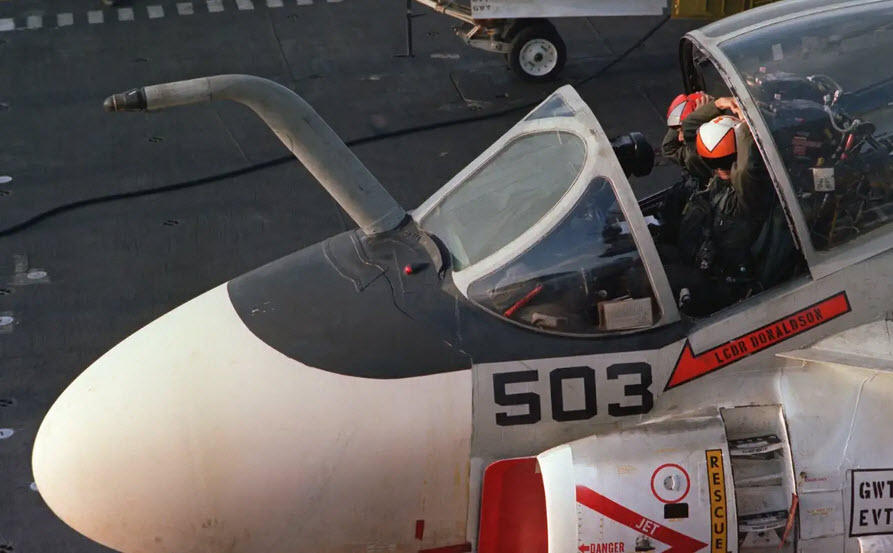
We would routinely do this at night, though the mountains, in the clouds and rain, and at 200 feet and 420 knots. There was zero automation, the pilot hand-flew the plane at all times. But to me, the craziest aspect was that the BNs stuck their heads in the boot covering the radar and FLIR screens through the whole mission.
The boot was essentially a shroud with a padded hole where the BN would stick his face. It shielded the cockpit from the light of the radar so it wouldn’t blind the pilot during night flying. But when using it, the BN couldn’t see what was going on outside in the real world. So we would be flying through steep ravines at seven miles a minute at night as low as we dared, I would be glancing nervously at the granite cliff wall I could barely make out and the BN was stuck with his head down, arms spinning dials and switches like some dark wizard, immersed in his virtual world of radar returns and seemingly oblivious to the violent yanking and banking as we jinked through the low-level route.
The flying became even more aggressive once we entered the target area and executed any number of dynamic weapons delivery pops, all while the BN kept his head glued in his boot.
Craziness.
Because of that dedication to the mission and the simple fact that the Intruder was designed to be optimized by the BN, the community was as flat as any I’ve ever seen. Meaning that there was almost no greater weight placed on whether someone was a pilot or a BN. This was definitely not true in the fighter communities, where pilots considered themselves far superior to anyone, whether they were in aviation or not.
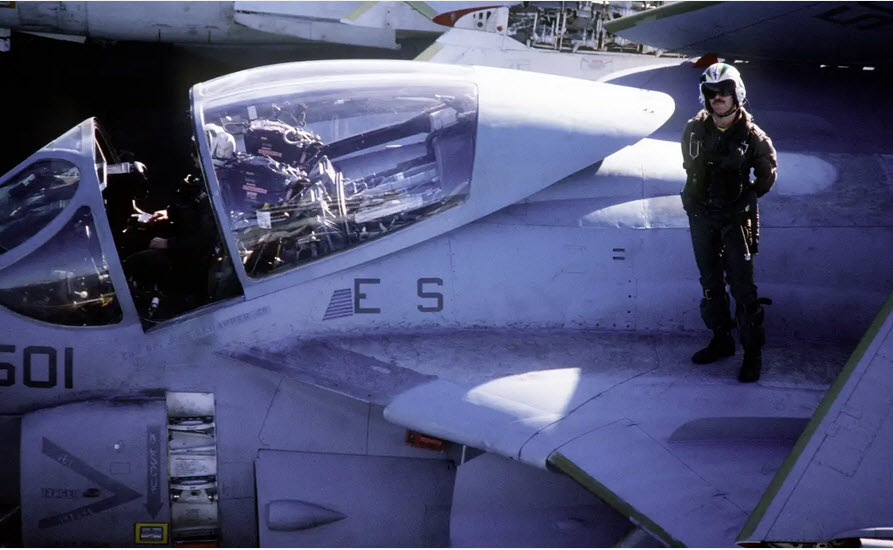
An accidental fighter pilot
I was as close as you can be to an accidental fighter pilot. As a kid, I built plane models and hung them from the ceiling of my room in a huge Battle of Britain dogfight. But as I got older, I drifted away from the romance of aviation.
I didn’t grow up around planes. No one I knew was a pilot. I wasn’t one of those kids who washed Pipers at the local airport for gas money. Fortunately, I needed money to pay for college and I joined the Navy ROTC. What began as a means to an end morphed into an opportunity of a lifetime.
As a Midshipman, I was exposed to all of the communities that were available to me after graduation. After a couple of years, I was strongly inclined to pursue Naval Aviation and then something decisive happened the summer before Junior year. I got a back-seat ride in an F-14 with VF-51 and it was love at first flight. I couldn’t imagine doing anything else after I got a taste.
I was obsessed.
In the spring of our senior year, we received our community assignments. All the graduating ROTC and Naval Academy kids were ranked, then the slots were given out in order. It was, and is, extremely competitive to get aviation and I was beyond thrilled to receive my dream shot.
Hundreds of SNAs—Student Naval Aviators—gathered in the Cradle of Naval Aviation—Pensacola, Florida—that summer and we churned our way through the sausage factory that was flight school. I made it through all the fail points: academics, physical training, and primary training in the T-34. After all that I was selected for jets.
I went through intermediate training in the T-2 Buckeye, where I saw the carrier for the first time, and finally advanced flight training in the TA-4J Skyhawk. After carrier qualifying in the Skyhawk, I had finally completed the multi-year odyssey that began when I was first smitten.
The winging ceremony was an emotional, momentary personal victory. I was finally a Naval Aviator sporting wings of gold.
Little did I realize that the real work was about to begin.
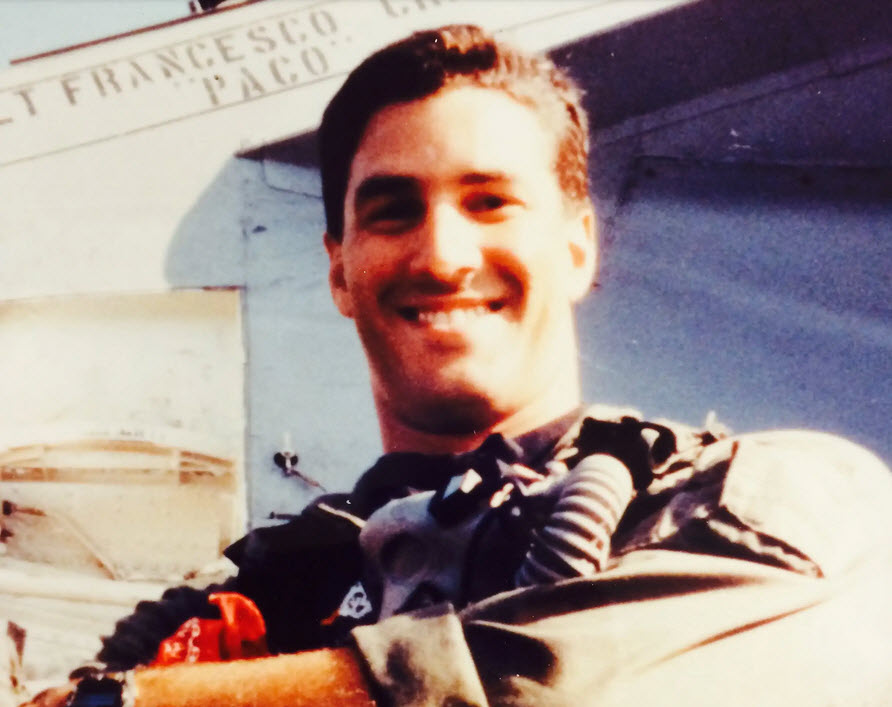
A young Paco standing in front of his mount.
The night is dark and full of terrors
The A-6 was super honest to land. It had a great combination of wing sweep, responsive engines, and drag which allowed for quick and fine corrections while flying the meatball.
Near the completion of training, we would carrier qualify, day and night. It was a big deal, our final exam. In the Intruder community, we would go to the boat for the first time with a fellow student, a BN that was our classmate. I was lucky enough to go with my good friend Gradymon. It was an intense experience for both of us, but especially for Grady since he had never seen an aircraft carrier from the air. The first time the BNs ever got to land on a ship was with a fellow knucklehead student (who routinely disconnected his G-suit hose at inappropriate times) piloting him.
Those guys were either crazy or brave as shit.
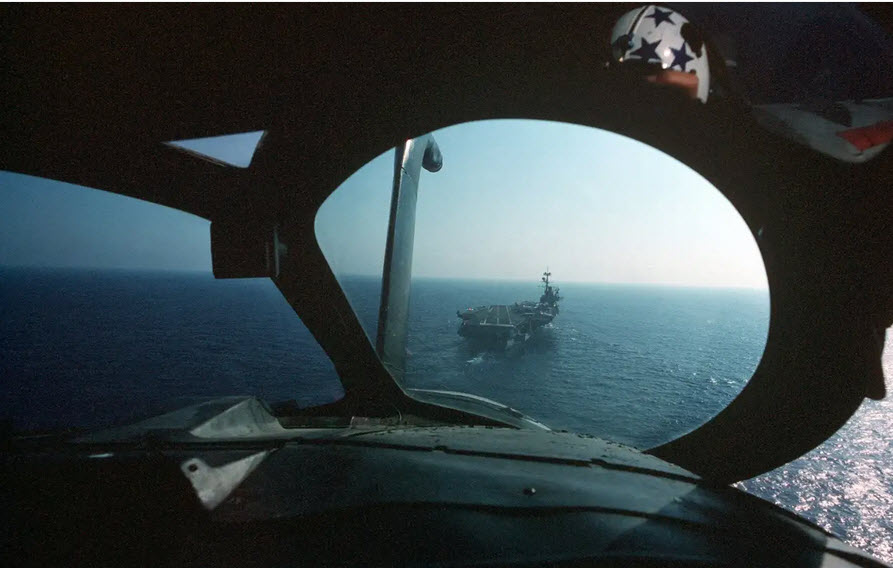
The day landings were awesome and similar to the landings I had done in the T-2 and TA-4, but the night landings were going to be a completely new ballgame for me. It was going to be a huge comfort to have Grady by my side. Unfortunately, we didn’t make it up that night.
We spent the evening on the USS Ranger, having dinner and waiting for our turn to climb into a jet. The plan was for us to hot-switch into a plane that our classmates were currently flying. After their last night landing, they would be chained to the deck. With the engines still running, we would switch crews one at a time until Grady and I were safely strapped into the still running jet. Then we’d get fueled up and taxi to the catapult to take our turn at six night traps.
We tracked our jet as she went around the pattern, successfully landing five times. After she took off for the last time, we made our way up to flight deck control to await the last landing and the hot-switch. There were multiple TVs and a window facing the landing area.
I’ll never forget watching my jet on the TV as she was about to land. I leaned over to tighten my chest strap and she hit the deck and caught a wire. As I stood up, I could see her through the window. One moment she was decelerating with both engines howling at full power, just as normal. The next, the pilot and BN ejected, the jet angled out of the landing area toward a row of parked F/A-18s, slammed into them, then flipped into the water.
One of the F/A-18s snapped out of her chains and flipped into the water as well. Another was impacted so hard it also snapped its chains and spun 180 degrees, managing to barely stay on the deck. I stood there in Flight Deck Control with my hands still on my straps, my jaw hanging open.
The Intruder I was supposed to climb into and fly my very first night carrier landings had just broken its tailhook, smashed into three Hornets, and flipped into the sea.
Welcome to naval aviation!
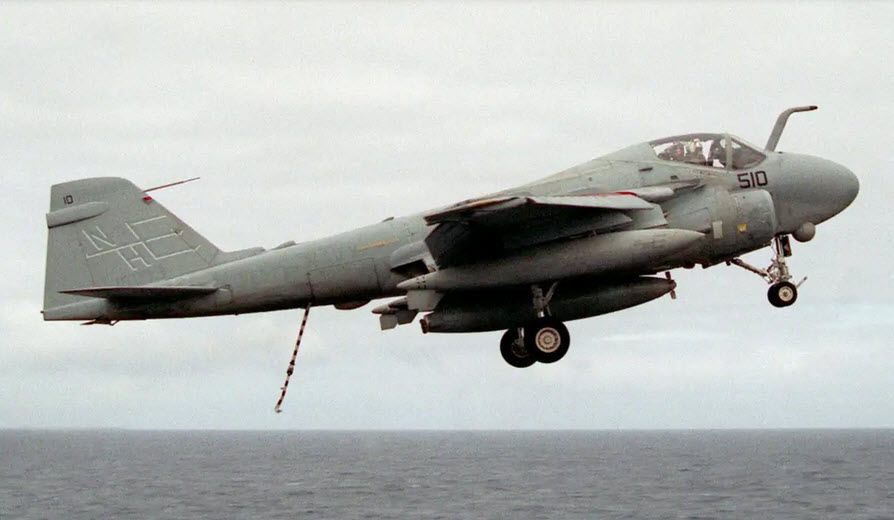
At home in the weeds
In the Intruder, flying nap-of-the-earth was our bread and butter. We did it during the day, free and loose, darting down the tiniest riverbeds and through the slightest cracks we could find. During the night and in bad weather, we also flew low and fast, but in a much more prescribed manner.
The low levels we flew were delineated in a huge manual, which contained the lat/long fixes defining the routes themselves. For the most part, the routes were ten miles wide, five miles to each side of the center-line running from fix to fix. A ten-mile corridor actually gives a pilot a tremendous amount of leeway to find the most tactically relevant course through the terrain, as well as the most fun. So, even the same route was not always the same.
Night low levels were a different beast. To become night proficient, a pilot and BN crew would have to complete three steps within a week. First, they would have to fly a route in the dome simulator. Then they would fly the same route during the day, and finally at night. This gave the crew two opportunities for the BN to familiarize himself with the radar picture before flying the actual route in darkness.
Once you were night low-level qualified, you could then fly any route, day or night.
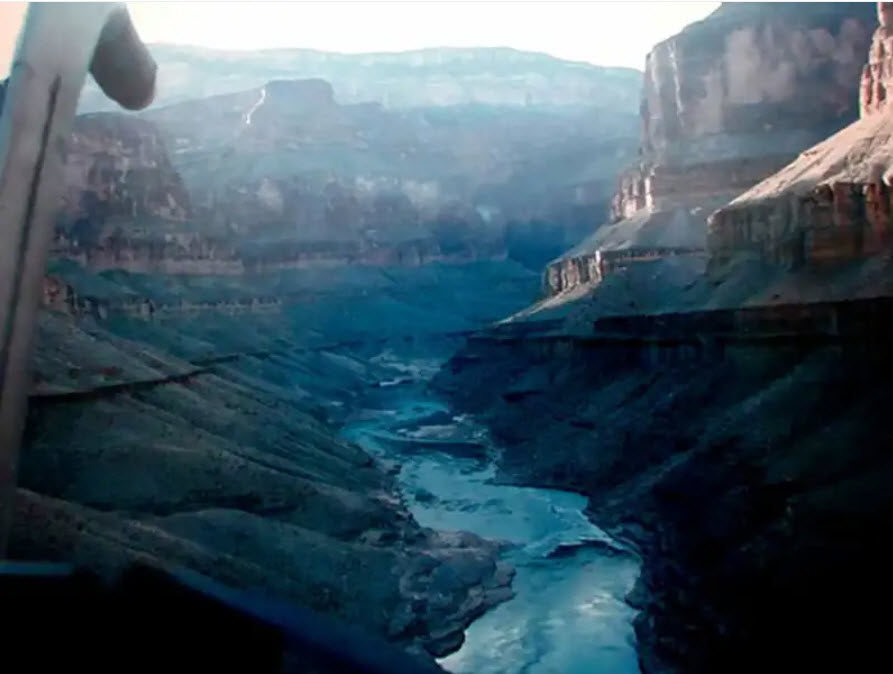
A-6 Intruder rocketing through a very deep canyon as seen from the BN’s position.
Nuclear chariot
One of the missions the A-6 was initially designed for was nuclear delivery of the B61 tactical nuclear bomb, affectionately known as the ‘dial-a-yield.’ There was literally a rotating switch inside a panel where the ordnancemen could select from .3 to 340 kilotons for when the bomb detonated. It was an incredible amount of power in a weapon that measured only twelve feet by one-foot and weighed just 700 pounds. By comparison, ‘Little Boy’ which was dropped on Hiroshima, weighed almost 10,000 pounds and had a defined yield of 15 kilotons.
It was chilling to imagine that something so diabolically versatile and powerful could be carried on a small jet and weigh less than an AGM-88 Hight-Speed Anti-Radiation Missile (HARM).
The main method of delivering the B61 was through a specific maneuver selectable in the computer, the LABS-IP, which stood for Low Altitude Bombing System – Initial Point. To practice this delivery, we would ingress to the target at low-level, usually at 480 knots, and once reaching the target area, we would accelerate to 540 knots.
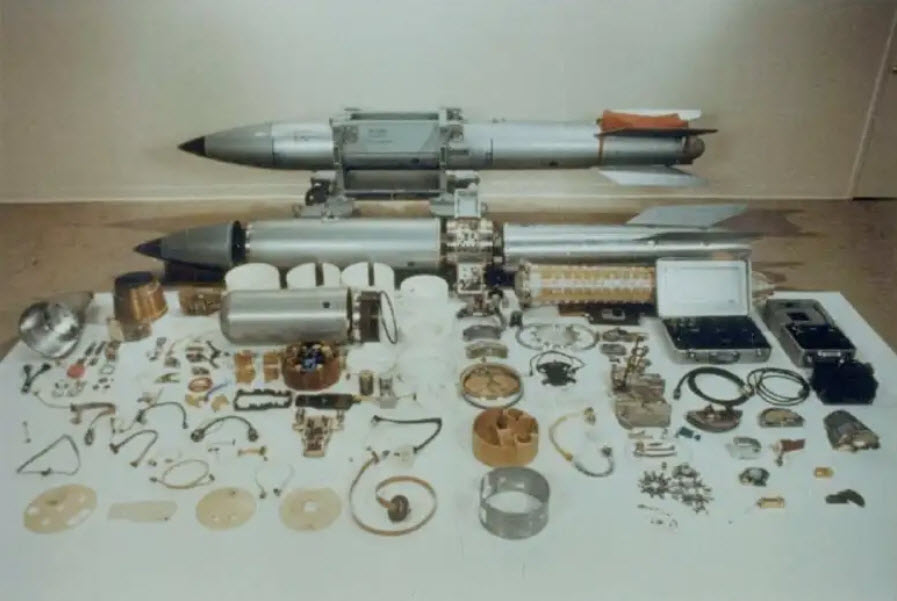
B61 and its components.
At a certain distance from the target, which the BN was constantly fine-tuning through the radar and FLIR, the computer would command the pilot to pitch up. We would get guidance on our primary instrument commanding us into a 4G pull and we had to correct the horizontal flight path as well. Despite the Gs, we had to be as smooth as possible because at some point during the pull, 50-75 degrees nose high, the computer would release the weapon into a massive loft. The pilot would then keep his pull through a Half Cuban Eight, ending the maneuver heading in the direction they came from, at 200 feet, pedaling as fast as they could go.
The bomb would be lofted as high as six miles into the sky, and depending on the programming for the specific target, a parachute would open allowing the B61 to float toward earth, thus giving the delivery aircraft valuable time to race away before detonation.
The procedures called for each crew to close one eye at the time of detonation, in case the flash caused blindness. We used to joke that the pilots would close both eyes and the BNs would keep theirs open, since their jobs were done.
It was a heartless crowd.
I came into the fleet just after Gulf War I, in the summer of 1991. The Cold War was done, and we had just shed the onerous nuke delivery mission. I was one of the first pilots in my squadron not to have to go through the two-month drudgery of getting my ‘Nuke Cert.’
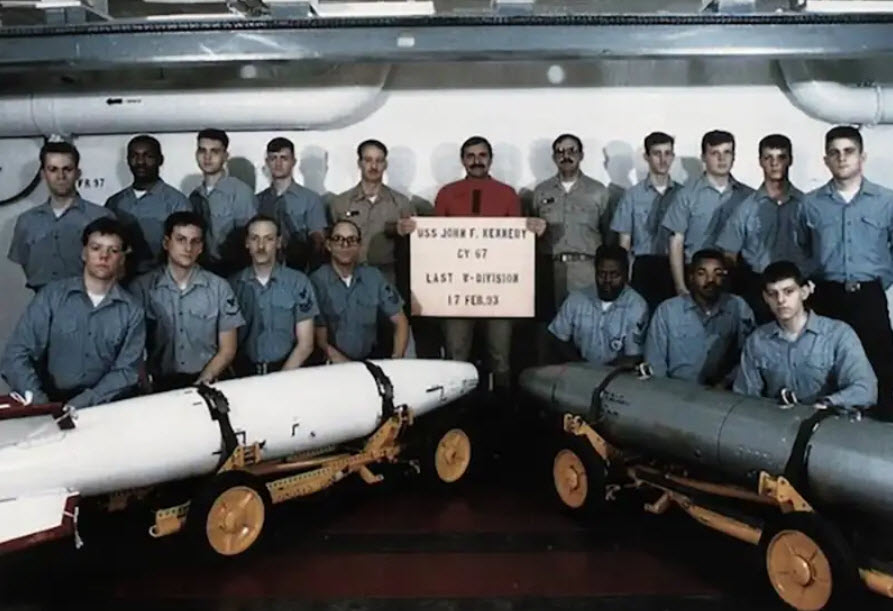
The Navy was out of the tactical nuclear bomb delivery business by the early 1990s.
Joining the fleet
I joined VA-155 the day they triumphantly flew in from their Gulf War cruise. The Silver Foxes were heroic in the conflict. They flew the first-night sorties into Bagdad at low-level, attacking vital military targets as surface-to-air missiles flew in all directions overhead. Throughout the forty-day air campaign, they were instrumental in completely demolishing Saddam’s military. Tragically, they lost one plane in combat in the waters just off Kuwait.
After combat ended, they partied their way home through various exotic ports of call, drunk from all their death-defying exploits. I remember swelling with pride as I stood in my khaki uniform on the flight line and watched them fly in.
The next six months, on the other hand, sucked as bad as any in my Navy career.
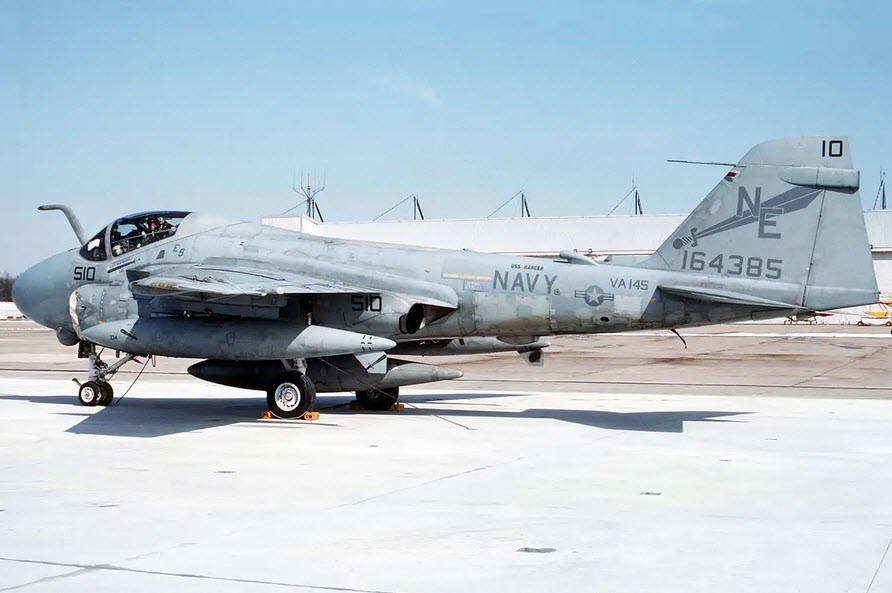
VA-145 A-6E on the ramp in 1992.
I was the first new pilot the Foxes had gotten in over a year. They were all heroes and I was just the FNG (F’n New Guy). It was almost impossible to penetrate the camaraderie they had naturally forged. It took a few of the older guys rotating out and an additional influx of new guys, including a bunch of my classmates, for us to finally feel like we belonged.
The Foxes ended up being an amazing experience for me, filled with incredible adventures and great people.
The work-ups for our first cruise were instrumental in building the new collection of Foxes into a cohesive squadron. The experienced aviators trained the new guys well and we quickly bonded into an effective unit.
It was during this early stage of my fleet career that I first experienced the shattering pain of loss. Air Wing Two lost a Tomcat during a night mission while we were all at NAS Fallon. And much closer to home, my good friend Grady and his pilot Dewey, fellow Silver Foxes, perished in a low-level training accident.
Of the twenty-plus friends I lost during my career, Grady’s was one of the most difficult to endure. We had come up through the RAG together as fast friends. I had flown with Grady more than any other single BN in my brief career. We rejoiced when we were both assigned to VA-155 and looked forward to three more years of fun and flying.
The sudden shock of his death shook me to my core, damaging my confidence for months.
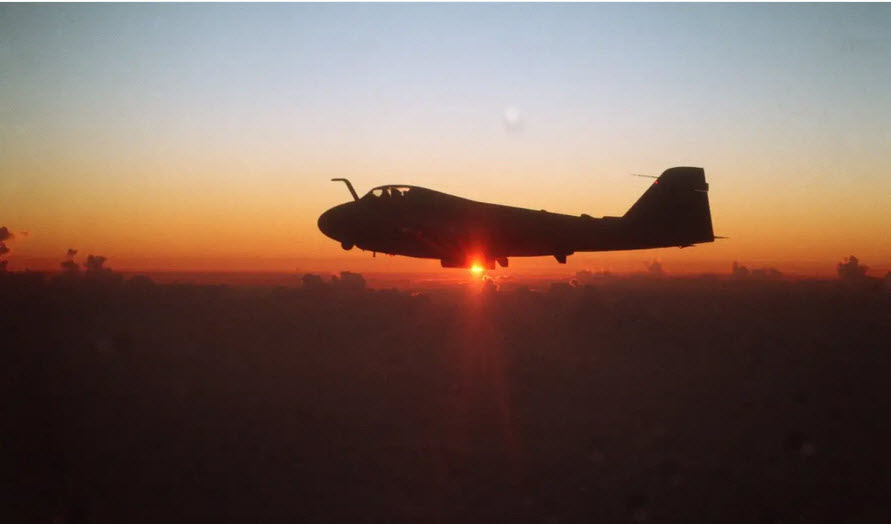
Intruder’s place in the Air Wing
When I cruised on the Ranger, we were the last of the all-Grumman Air Wings [read all about this unique arrangement in this past post of ours]. There were a number of other NSFW and non-PC terms that were used to reference the absence of the new kid on the block, the F/A-18 Hornet.
Air Wing Two was composed primarily of two squadrons of Tomcats and two of Intruders. My first squadron assignment was with VA-155, the Silver Foxes. Our sister squadron was VA-145, the Swordsmen.
Air Wing Two on the Ranger was basically the last of the old-school air wings. The division of labor was absolutely clear, if you needed the skies swept of enemy jets, the Tomcats took to the air. If you needed bridges demolished, buildings leveled, hardened bunkers penetrated, ground-armor destroyed, troops-in-the-open decimated, or SAM sites taken out, then the Intruder was on the job.
Though in the competition between Top Gun and Flight of the Intruder movies, the f^@%!*g Tomcats clearly won the battle. But the long list of accomplishments achieved by the Intruders in Air Wing Two during the first Gulf War clearly overshadowed their more glamorous Grumman brethren.
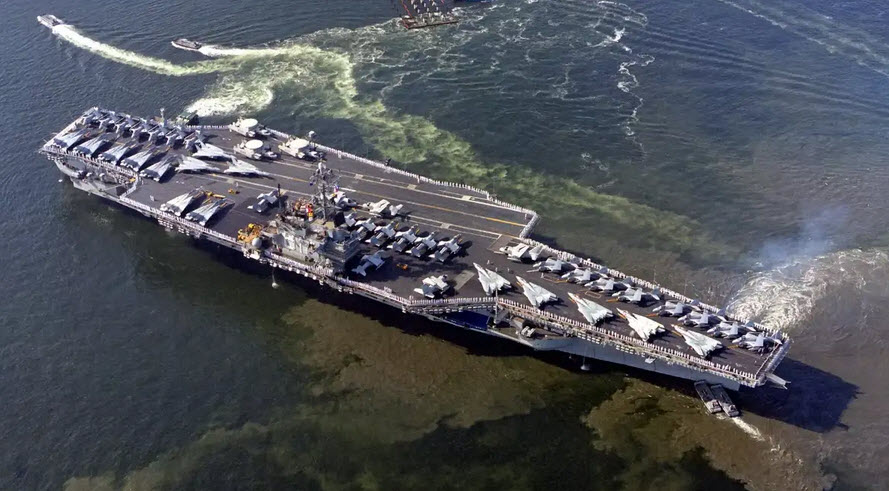
Ranger with its Grumman Air Wing.
All that gas
Most of my career was spent operating in the Persian Gulf where we had ample Air Force tanker support, but I flew a handful of tanker hops where we would strap four 2,000-pound drop-tanks and a centerline mounted D-704 refueling-pod, which aside from containing the retracting hose and basket, held another 2,000-pounds of gas.
The most fun tanker hops were the daytime yo-yo missions where you would launch before the fighters and strikers, meet them a couple hundred miles from the carrier along their strike route, give them almost all of your gas (18,000-20,000 pounds of give!) and then race back to the carrier for a solo shit-hot break.
The most rewarding tanker hops were when you were assigned as a recovery tanker for the last event of the night. Your job was to orbit overhead and be prepared to offer emergency gas to the planes that were coming down to land in the event they boltered (missed all the wires) or were waved off.
During Blue-Water ops, when we operated beyond the range of possibility to divert to a land-based runway, it was particularly challenging and a massive responsibility. Carrier-based jets are fuel-critical from the moment we start our engines. When we fly far enough out to sea where calling ‘uncle’ and landing on a runway isn’t possible, every ounce of gas becomes precious.
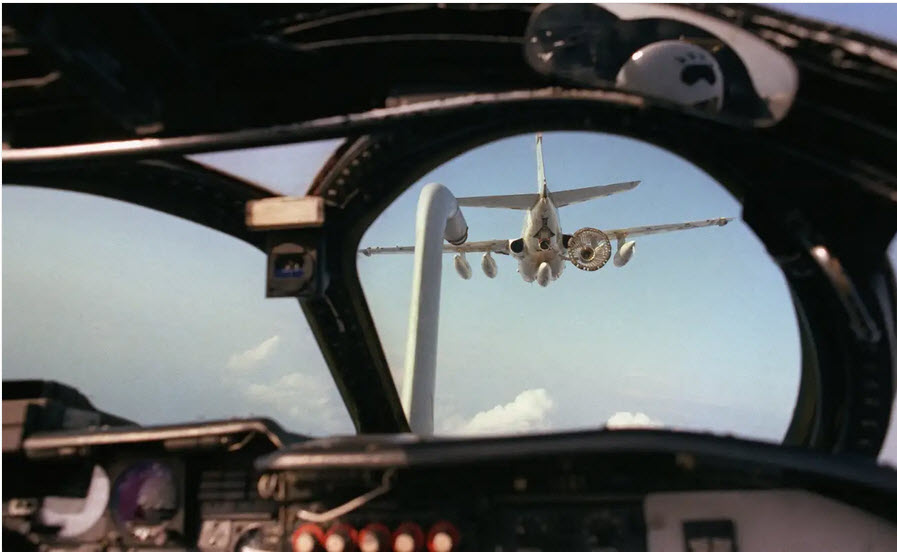
An A-6E Intruder about to tank from a KA-6D Intruder. The KA-6Ds were uniquely configured with an internal hose and drogue system and were notoriously hard worn with extreme limits on their flight envelope due to being passed around from deployment to deployment. By the time Paco was flying Intruders, the A-6E carrying a refueling pod was the common ‘buddy tanker’ setup.
Once the night missions are complete and it’s time to land, the jets have enough gas for maybe two attempts to catch a wire. Throw in some weather, a pitching deck, a dark night and the knowledge that you either are landing safely on the ship, or ejecting into the frigid ocean, a pilot can get so tense that they practically suck the seat cushion up their butt.
Everyone I know has had a ‘night-in-the-barrel,’ a night where they had difficulty beyond normal catching a wire. And after every miss, the tension became more intense. You knew that five-thousand people were watching your every failed attempt, including your peers, your CO, the Skipper of the ship, and most likely the Strike-Group Admiral.
As the recovery tanker you were the last line of hope for a strung-out pilot who had already failed to land a few times. His, or her, nerves were surely shattered and confidence was in their boots. On the last pass before the troubled plane would need to refuel, the recovery tanker would drop down to shadow, or ‘hawk,’ the jet.
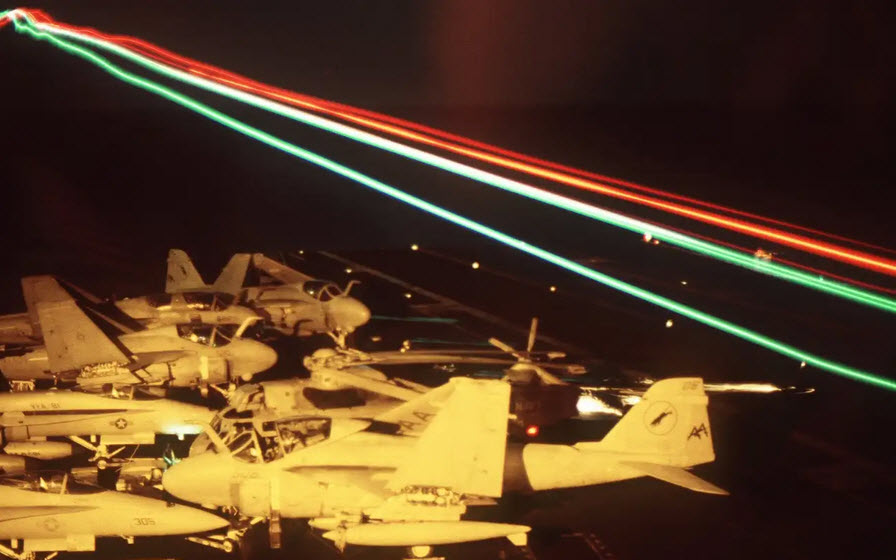
You would have to maneuver yourself to time it perfectly so that if the jet failed to land once again you would be just in front of them at 2,000 feet. Then that shaky, panicky pilot could spot you immediately as they cleaned up and climbed to your altitude right behind you. Then they would have to perform an activity just slightly less challenging than landing on a carrier at night, they would have to plug their refueling probe into a basket dangling into the slipstream fifty feet behind the tanker at night, maybe in bad weather, at 2,000 feet. Or, they were going swimming. And the reward for a successful plug and refuel was another look at the boat.
Yay.
I know a guy who had to go around so many times he plugged the hawking tanker three times. After he finally landed, he was so wrung out he had to be helped from the cockpit.
And after all the drama was complete for the night, the recovery tanker had to come in and land. And there was no one hawking you with extra gas if you couldn’t make it aboard.
I didn’t love flying tanker missions and thankfully I didn’t have to fly many, but the yo-yo, and especially the recovery tanker missions were always gratifying.
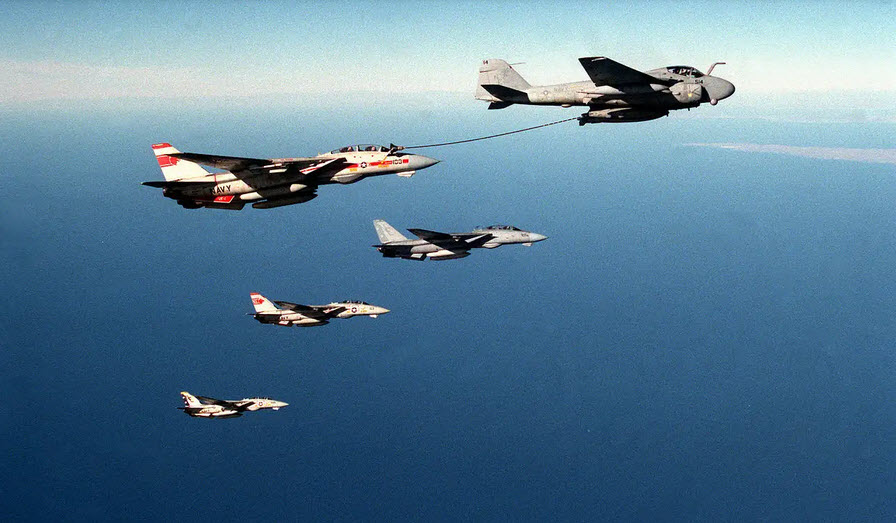
Ranger into the storm
By the time our workups were complete and we headed out on my first deployment I felt very comfortable in the Intruder and in the squadron. There was an undeniable thrill about leaving on my first deployment. It felt very grown-up, even though I was barely twenty-five. I was a junior officer, though we had had enough new guys where I wasn’t an FNG anymore. I had been in the squadron for over a year and become a Landing Signals Officer (LSO) as well, which was a fantastic position of responsibility and a job I thoroughly enjoyed.
After multiple detachments to Fallon and working from the Ranger I also felt extremely comfortable as a member of the Air Wing. Many of my friends from flight school ended up in the same Air Wing, scattered throughout the Tomcat, Intruder, Prowler, and Hawkeye squadrons. It was one of the closest Air Wings I was a part of, with great friendships and camaraderie across all the squadrons.
We pulled into Yokosuka, Japan. I climbed Mt. Fuji after a big night at the O-Club, which ended up being more of a challenge than it should have. Many of us spent five days partying in Tokyo, which was amazing. The ship left Japan for Busan, Korea, spending a few days at sea so the pilots could all fly at night.
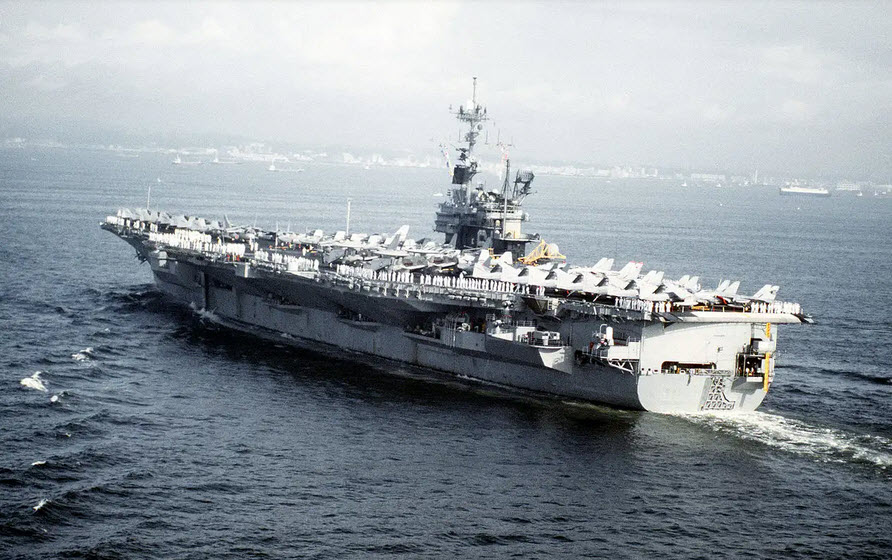
Ranger pulling into Yokuska in 1992 with Paco and VA-155 onboard.
At sea, each pilot is required to get a minimum of one night trap aboard the ship every seven days. One of the lesser-known pains of leaving port after four to five days of hard-charging was climbing into the cockpit for a night ‘re-qual’ all exhausted and hung over.
It was in Busan, on our second day of a planned four-day visit, where the cruise ratcheted up in intensity. The entire Strike Group was emergency recalled to their ships. We were pulling out immediately. Saddam had repeatedly violated the terms of the 1991 Cease Fire agreement. The powers that be demanded a US carrier on scene in the Persian Gulf to keep the dictator in check. The Ranger and her Strike Group sped away from the Korean Peninsula with great urgency.
It seemed there was action to be had again.
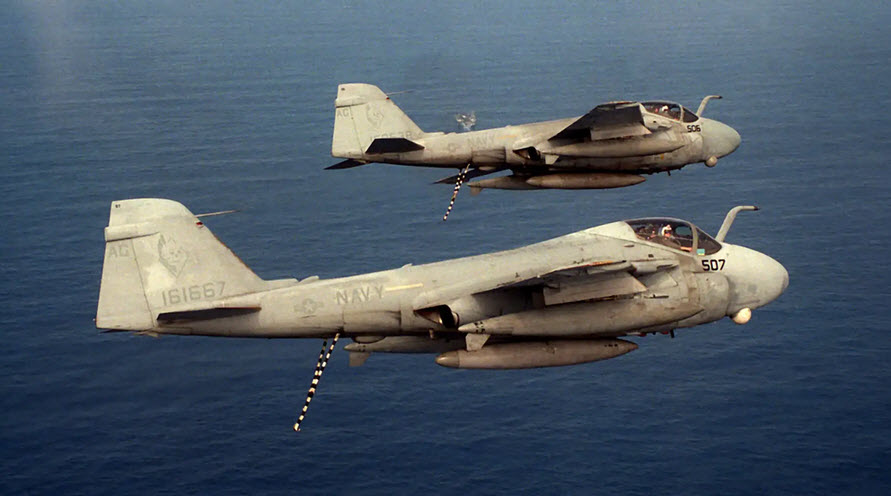
Leadership was so intent to have a carrier presence as soon as possible that Ranger was sent directly through a Category 4 typhoon while en route. All of the other ships in the Strike Group were sent far south in the Indian Ocean to skirt around the massive storm, delaying them by many days. The Ranger rocked like a cork for three straight days. All non-essential activities were suspended, inside and out. The galleys closed and the only food available was sandwiches and cereal.
The ship was rolling so steeply that when you walked along the passageways it felt as if you were walking on the walls at times. We stuck our flight boots under the edges of our mattresses so we wouldn’t roll out of the bunk beds.
I’ll never forget watching the TV footage of the flight deck. During the peak of the storm, the Ranger, an 80,000-ton displacement, 1,000-foot, Forrestal class supercarrier with 70 aircraft on board, was hitting the waves so steeply that we were taking green water over the bow. Not sea spray, not splashes. The bow of the huge ship, with an entire Air Wing worth of airplanes exposed and chained to the deck, was digging into the oncoming waves so deeply that it was briefly submerged.
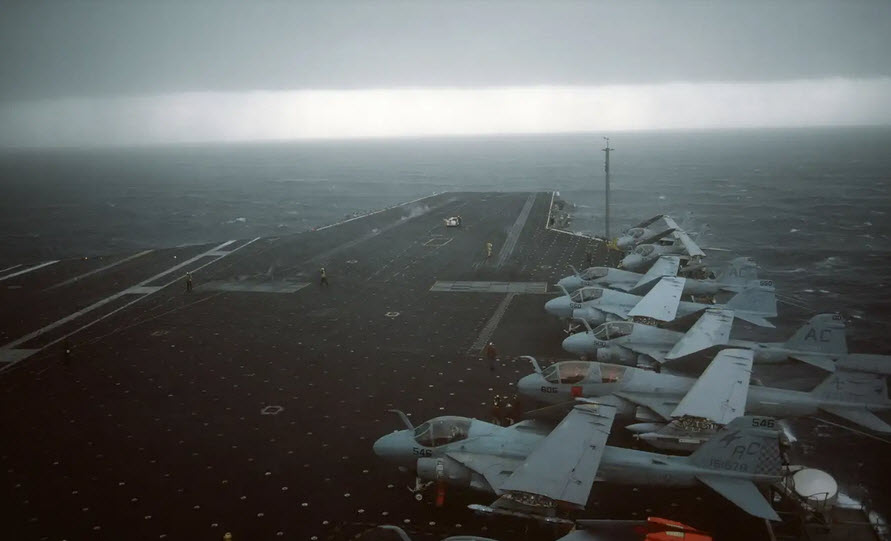
Needless to say, after we came out the other side, the planes were a mess. Our incredible maintainers had a week to perform a miracle. They essentially had to rebuild a third of the planes that had been bathed in corrosive salt water. It was one of the most incredible feats of dedication I witnessed in my career. Those guys worked around the clock untill they dropped so that when we arrived in the Gulf we would have up jets to cross the beach with.
The transit from Korea to the Gulf was an amazing feat in itself. The Ranger steamed over 7,000 NM in under two weeks. A trip that would normally have taken three weeks, plus a port call in Singapore, to accomplish.
Sound asleep over Iraq
I’ll never forget the excitement that was building those last few days before we relieved the Independence on-station in the Persian Gulf. The other new guys and I were certain we were going to leap right into combat missions. My new BN, Pauly B, and I were tasked with planning the first mission in country. This was a huge honor and responsibility—or so I thought.
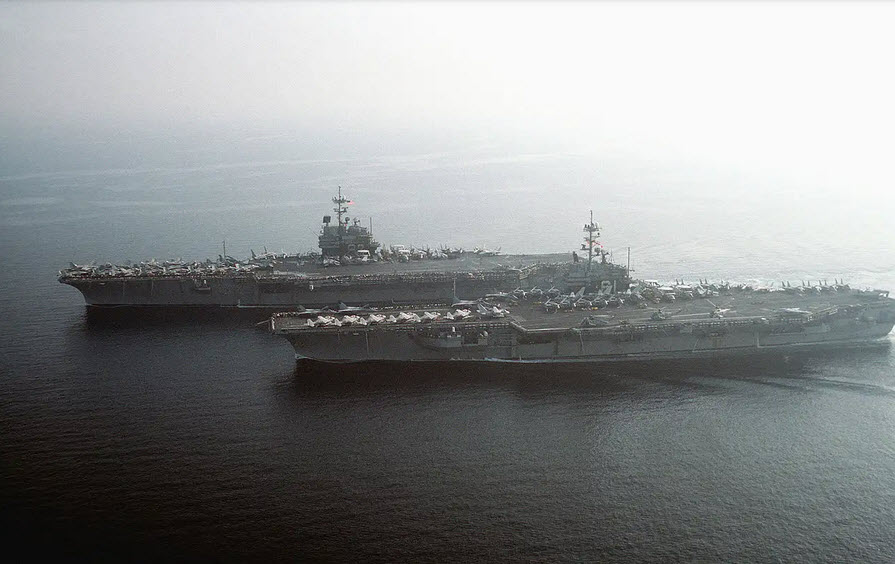
Ranger relieving Independence on station in Persian Gulf in 1992.
Pauly and I stayed up for two days straight planning a 25-plane mission that involved three KC-135 Air Force tankers and two laps around Southern Iraq. I was so spooled up I couldn’t sleep the night before. Pauly and I briefed a packed ready room full of aircrew from the entire Wing. We were putting Saddam on notice, the Ranger and Air Wing Two were on station and we were ready to play.
The brief ended in the early afternoon and Pauly and I grabbed a quick dinner. We dressed and launched as the sun hung low on the horizon. I was fielding massive waves of excitement and trepidation as we flew toward the tanker rendezvous on the Saudi/Iraqi border. Not only was I leading my first mission in-country, but I had never before tanked off the feared KC-135, known as the ‘Iron Maiden.’
It certainly didn’t help my nerves that night was falling rapidly. If I failed to tank, I would have to return to Ranger in shame. If I damaged the basket by being ham-handed, the entire evolution could be scrapped.
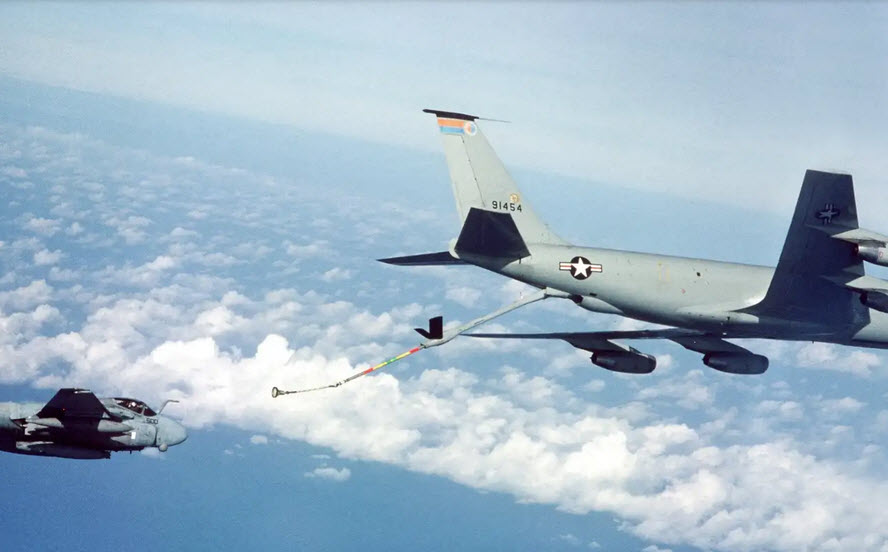
An A-6E approaches a KC-135E equipped with the dreaded Iron Maiden. The basket, which is attached to the KC-135’s boom via an adapter, is made of metal instead of the softer materials found on other hose and drogue systems. This makes it far less forgiving and it can even wheel around in turbulence and smash into the aircraft causing damage. Hence its other nickname—The Wrecking Ball.
Fortunately, I was able to fight my way through the ordeal and get my gas.
Once the whole package had tanked, Pauly conducted the roll call and we were off, heading into Iraq for our first lap.
I’ve had never seen anything as black as western Iraq. There wasn’t a light on the ground for a thousand miles. It was a moonless night and the stars were the brightest I had ever seen, but they provided no illumination of the earth below. I felt as if we were flying into a black hole.
The Intruder had a basic autopilot, just heading and altitude, and I engaged it once we were on the correct heading. After two sleepless nights and the excitement of the mission and stress of meeting the Iron Maiden under such intense circumstances, I was absolutely drained. My eyes blinked longer and longer until I actually fell asleep in a combat-loaded A-6E Intruder flying through hostile territory while leading a strike package.
Not one of my prouder moments. But as it turned out, Pauly B was dead asleep right next to me, too.
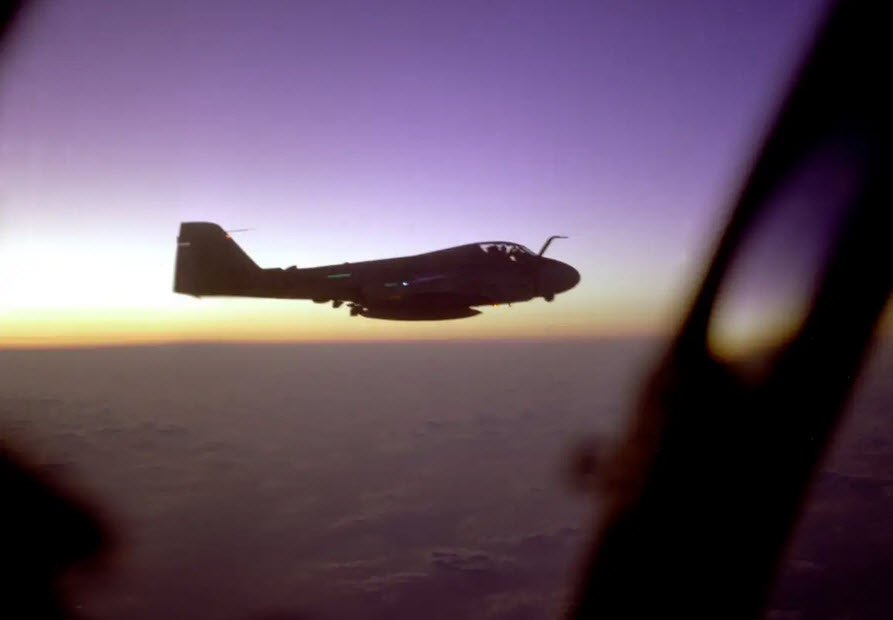
I still get shivers thinking about how long we would have flown on that heading. How far we would have gone. We were pointed directly at Syria, which surely would not have appreciated a U.S. Navy strike package coming close to its border. Ultimately, we were saved by chance, though it nearly gave me a heart attack.
While I was sleeping on a hard ejection seat in a cramped cockpit as deeply as I’ve ever slept in my life, our ALR-67 radar warning receiver (RWR) began a high warble. We had been locked up by a radar. I woke with my heart in my mouth disengaged the autopilot and jinked hard.
I looked down at the ALR-67 screen to determine the direction of the radar and saw that we had been locked up by one of the F-14s in our group. The RIO came up on the secure radio and quickly apologized. It was one of their new guys screwing around with his radar. He hadn’t meant to lock us up.
Pauly and I looked at each other, realizing we had both been asleep and that we had just dodged a virtual bullet. We were wide awake, but it only lasted fifteen minutes before exhaustion set in again. We worked really hard telling dirty jokes and stories for the next four hours till the terror of the night trap was enough to bring us fully awake again.
The remainder of our four months in the gulf was a series of similar patrol missions punctuated by port calls in Dubai. Though I never saw any action in Iraq, I did achieve a measure of detente with the KC-135’s Iron Maiden. She never bit off my probe or shattered my canopy, I never ripped off her basket.
How to kill MiGs in an Intruder
At its prime, which unfortunately coincided with its retirement from service, the Intruder could carry just about every piece of air-to-mud ordnance in the US inventory. And, the AIM-9 Sidewinder.
Being a frustrated fighter pilot, I devised a game plan for how I would get the first Intruder air-to-air kill should any Iraqi MiG-29 be so foolish as to come at us. If we were flying a counter-radar mission our standard loadout was an AGM-88 High-Speed Anti-Radiation Missile (HARM) missile and an AIM-9 Sidewinder.

Silver Foxes’ sister squadron, the Swordsman, seen carrying an AIM-9 Sidewinder during a mission over the Persian Gulf in 1992.
My plan of record was to go nose-to-nose with the Fulcrum, wait till he got to three miles on our nose then shoot the HARM in his direction. The big missile with a huge smoke trail would spook the Iraqi fighter into break turning just in front of me. When he was close enough, I would fire the Sidewinder for the victory.
In the folly of youth, I thought this was an excellent plan and no so secretly hoped an unwitting MiG-29 would come poking around. Thankfully it never became an issue. Though I still like to think it might have worked.
The glory!
Intruding into Somalia
As we were nearing the end of our time in the Gulf, another global hot-spot flared up and Ranger was, once again, tasked with being on-station. In early December of 1992, the feeble government of Somalia completely collapsed and the warlords were battling each other for primacy. The thugs were stealing farmers’ crops immediately after harvest and the country was on the verge of massive starvation. The United Nations was sending in relief but the warlords were stealing those supplies, as well.
The Ranger and Air Wing Two skipped our last port call in Dubai and made for the coast off Mogadishu at high speed. It was exciting to plan for a new mission in a new country. We were initially tasked with providing high cover and close-air-support for the U.N. personnel. The threat to us was minimal, ground fire from technicals—civilian pickup trucks modified with heavy guns. There was also a slim possibility of shoulder-launched SAMs, though none had been reported in the area. For the most part, we expected to operate with impunity, so long as we stayed above the range of the heavy guns.
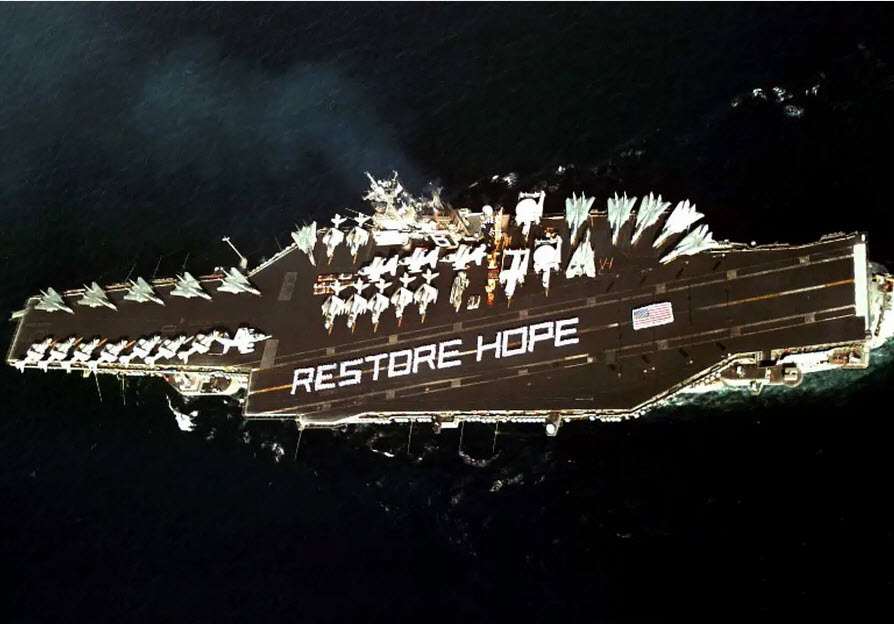
USS Ranger taking part in Operation Restore Hope in 1992.
The Commander of the Air Wing set the floor at 5,000 feet for normal operations and as low as we wanted for special circumstances. Those included low, fast fly-bys called ‘shows of force’ designed to strike fear into the hearts of bad actors on the ground below. We would come in at 50 feet and 500 knots, sneaking in from behind their position. It was a hugely effective and non-lethal tactic.
We were briefed that the biggest threat to our health was the diseases on the ground in the event we ejected. Since the Somalia visit was unplanned, none of us had received the proper inoculations. I’ll never forget our flight doc briefing the ready room about two additions to our flight gear. Two pre-filled syringes loaded with a cocktail of who-knows-what designed to keep us reasonably safe should our boots actually hit Somali soil. If we punched out, the moment we landed we were supposed to yank out the syringes, pop the tops and inject ourselves straight through our G-suits into the meat of our thighs.
What a trip.
By this time, the various squadron crews in the Wing had become very close. The E-2 Hawkeye guys were not allowed to cross feet-dry. One day, while we were telling them about the incredible views we were enjoying as we flew, they told us they couldn’t see us on their radars after we were a certain distance inland. Naturally, we devised a code word so we could break the 5,000-foot deck and fly low, where the Intruder was meant to be.
Whenever we flew with all junior officer crews, we would skim over the Somali heartland marveling at the change in topography. We saw giraffes and camels and strange chimney-like structures that, after some time, we determined were actually massive anthills. It was depressing to see fertile farm fields filled with water and crops, but devoid of farmers. They were starving because the warlords stole their harvest, not a lack of production.
My most enduring memory from the three weeks over Somalia was flying high cover for the amphibious landing. My BN and I began orbiting at 0400 in the pitch-black directly over the landing spot on the beach, loaded with laser-guided bombs. The BN scanned the shoreline with his FLIR, ensuring there was no opposition while dozens of landing craft came ashore disgorging trucks, APCs, and Marines.
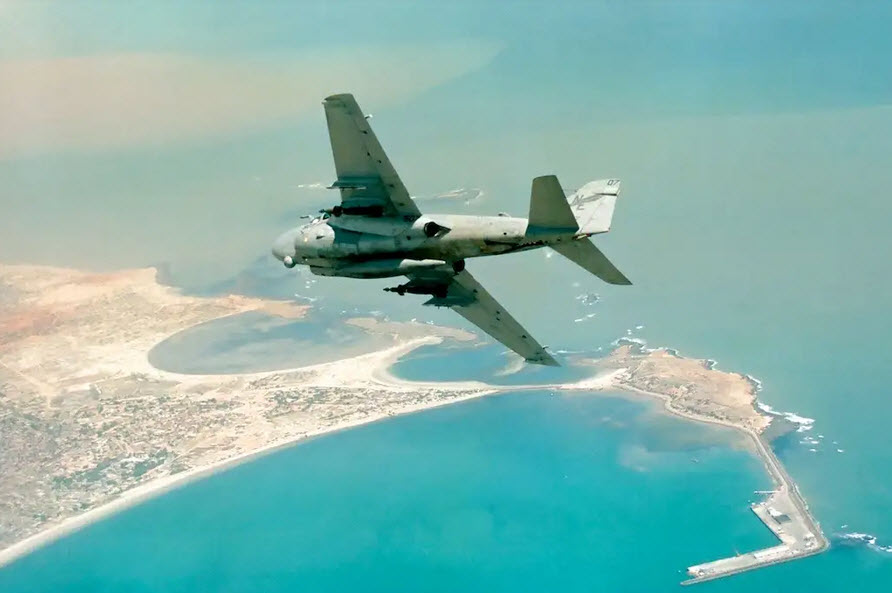
VA-155’s sister squadron seen flying over Somalia during the Ranger’s mission there in 1992.
Over the course of a couple of hours watch the empty beach fill with troops and machinery in an orderly manner and organize into a massive formation. As the sun peeked over the horizon, the headlights came on and the mechanized columns snaked away, dispersing in various directions into the countryside. It was an impressive and slightly emotional display.
A few days later, the Ranger and her Strike Group were released from Operation Restore Hope and we proceeded to Perth, Australia for our first port call in over six weeks.
Six quick interesting thoughts on flying Intruders
1) The Intruder was super fun to fly low and fast. It was like a Cadillac, smooth, powerful, and stable, with great visibility.
2) There were a number of landmarks along low-level routes that were traditional check-in-the box items. For instance, a derelict red pickup truck rusting away high in the Cascade Mountains in Washington. My personal favorite was checking the price of unleaded gas on a station marquee just before Winnemucca, Nevada when flying to Fallon.
3) We had the Pickle Barrel bombing patch. To earn it the pilot had to literally drop a Mk-76 ‘Blue Death’ practice bomb into a barrel on the Boardman, Oregon target range on his first visual delivery of the month. Only one chance every month.
Took me forever to get that damn patch.
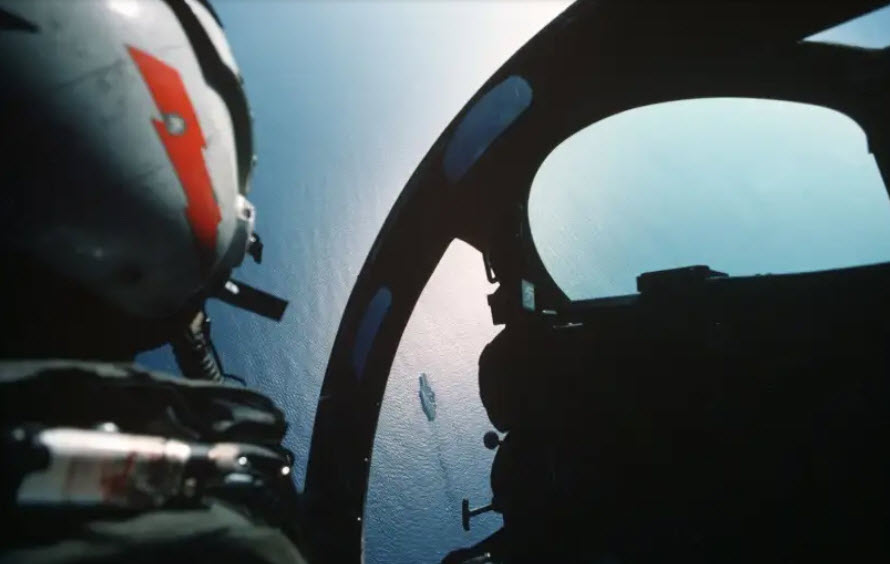
4) We had a not-so-stealthy manner of doing awesome fly-bys of the Officer’s Club, which was on the beach at NAS Whidbey Island. Coming back to base you could request an “Intruder Attack.” If the pattern was clear, it was generally approved. Ostensibly, we were conducting a practice bombing run on the valuable assets of the base. In reality, it was a license to do a 200 foot, 420-knot run right over all your buddies heads at the club.
Everyone would come out to watch. It was truly awesome.
5) Even though we had spin/departure procedures in the event of out-of-control flight, in reality, all the pilot had to do was release any pressure on the stick and rudders. The giant nose was an Earth-seeking magnet. Eventually, you ended up pointed at the dirt and the plane was flying again.
6) When we flew through clouds and rain at night, as we often did in the Pacific Northwest, we would frequently get arcing blue static electricity across the windscreen called Saint Elmo’s Fire. What was unique to the Intruder was that the refueling probe sticking up prominently between the windscreen panels would also be affected, developing a bizarre cone of blue static electricity pointed aft.
Retiring the Intruder to conquer the Cat
Shortly after returning from the ’92-’93 cruise, VA-155 was decommissioned. It had been planned for a long time so it was no surprise, but it still stung.
Most of the junior officers were dispersed into other fleet squadrons. I was lucky, I got to go to our sister squadron in Air Wing Two, VA-145 The Swordsmen. I showed up for work in April of ’93 only to discover that the Swordsmen had just been put on the chopping block, as well. VA-145 was to be decommissioned five months later, at the end of September.
The nice thing was that they were a good squadron whom we were familiar with and we all flew our butts off in those few months together. The challenge was that now there would be another thirty pilots on the streets looking for a home.
I had not-so-secretly always wanted to fly the Tomcat since my backseat ride as a Midshipman. I spent many weeks putting together a bulletproof transition package to submit to the board, which was ultimately approved. I left for the east coast RAG (Replacement Air Group training squadron) in September of ’93 as excited for a move as I had ever been.
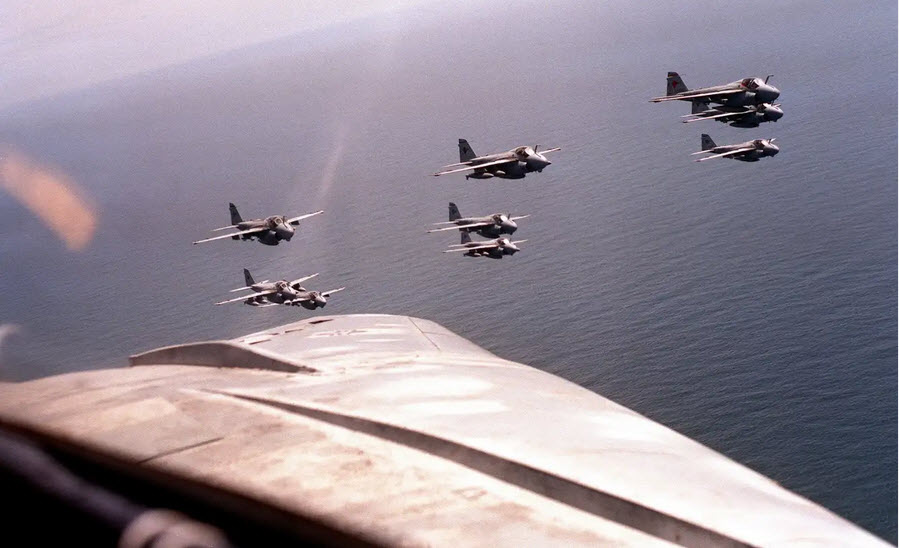
Going through a RAG the second time was almost stress-free, even though I was completing the full, new-guy syllabus. The basic systems were almost identical—thank you Grumman Iron Works—so the academic portion was fairly rote. But quite obviously, despite sharing a huge amount of DNA, the Tomcat was a significantly different beast than the Intruder. And I was absolutely thrilled to the core!
The power differential even in just the F-14A-model with the TF-30 engines was so insanely superior I didn’t stop smiling for three months. The B-model with the F110 engines was just ludicrous.
During my B-model demo hop I was flying in the Whiskey areas, about a hundred miles east over the ocean. The RIO (Radar Intercept Officer) had me go down to 200 feet, accelerate to 450 knots, then pull 4 Gs till I was straight up as I plugged in full afterburner. The plane had no tanks nor rails—slick as a newborn—and she leaped into the sky like a Saturn-5 rocket. Maybe 30 seconds later I was rolling over to level at 50,000 feet while still doing 250 knots.

The air-to-air mission was also completely new to me. But I found it intuitive and creative in a manner that felt very natural. I loved working with the RIO to solve the angles for the long-range intercepts and missile employment and I had waited my whole life to dogfight in the visual arena. If I had been half as skilled at dogfighting as I was enthusiastic, I would have been pretty good.
All in all, I enjoyed the three-year head start in flying fleet jets over my classmates immensely, but all of that came to a screaming halt when it came time to bring the beast aboard the ship, especially at night.
I already had a couple hundred fleet traps in the Intruder and I was an experienced LSO. The ship didn’t intimidate me, in fact I had been the Top Nugget – the best new guy – on my first cruise. But landing the Tomcat was a completely different, and quite humbling, affair.
Where the Intruder was instantly responsive to power, angle of attack (AOA), and glide slope corrections, the Tomcat was anything but. The TF-30 engines had a nasty lag, which made power corrections a combination of guesswork and experience. The wings stuck out to 20 degrees in the landing configuration, which was much more than the Intruder. Combined with a massive, flat fuselage designed in itself to provide significant lift, the airframe had a tendency to float and decelerate when power was removed.
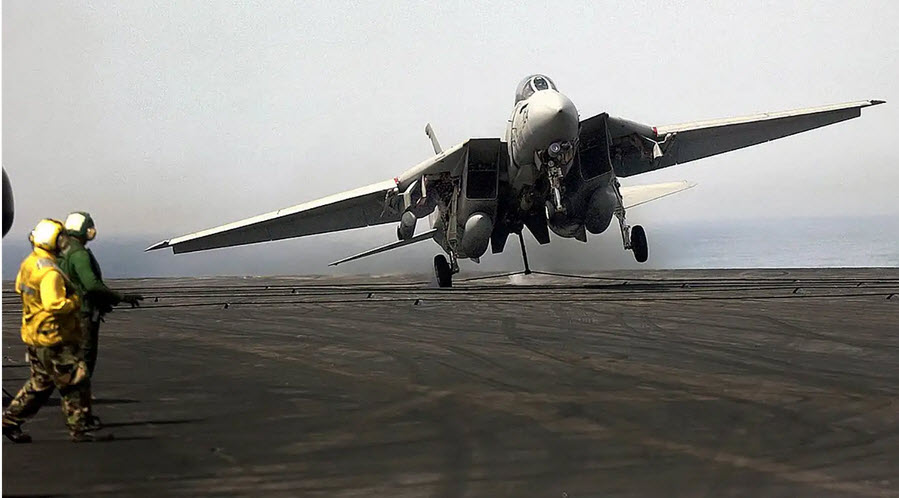
Lastly, the Tomcat had a massive hook-to-eye distance meaning that as the pilot sat far head, at the very tip of the jet, maneuvering to keep his eyeballs on the glide-slope, sixty-three feet behind him was a hook which hung about fifteen feet below. With even the slightest movement of the nose, the hook could move many feet at the end of that moment-arm causing the pilot to either catch a 1-wire or completely miss all the wires even if he could still see the meatball in the center.
In short, the F-14 was a huge challenge to land aboard the ship, much less to do it actually well consistently.
Bombcat’s brain trust
A few of my former Intruder peers and I were drafted into VF-213, the Blacklions, after the Tomcat RAG to help them spool up their air-to-ground program. As much as I’d always wanted to be a ‘fighter-guy’ flying nothing but BFM and air-to-air sorties at supersonic speeds, it was my experience in air-to-ground that brought me to the ‘World Famous Blacklions.’
VF-213 was in the process of integrating the LANTIRN targeting pod with the Tomcat and eager to get smart on air-to-mud tactics. The LANTIRN was a massively capable FLIR pod that was easily mounted on a shoulder station. It proved to be an immensely capable pairing between off-the-shelf technology and a legacy air-superiority fighter that extended the F-14’s service life for another fifteen years. With the LANTIRN pod the F-14 became the most capable platform in the Navy to deliver LGBs, far exceeding the F/A-18C’s targeting capabilities, speed, loiter time, and range.
Also, the Tomcat looked a billion times more badass.
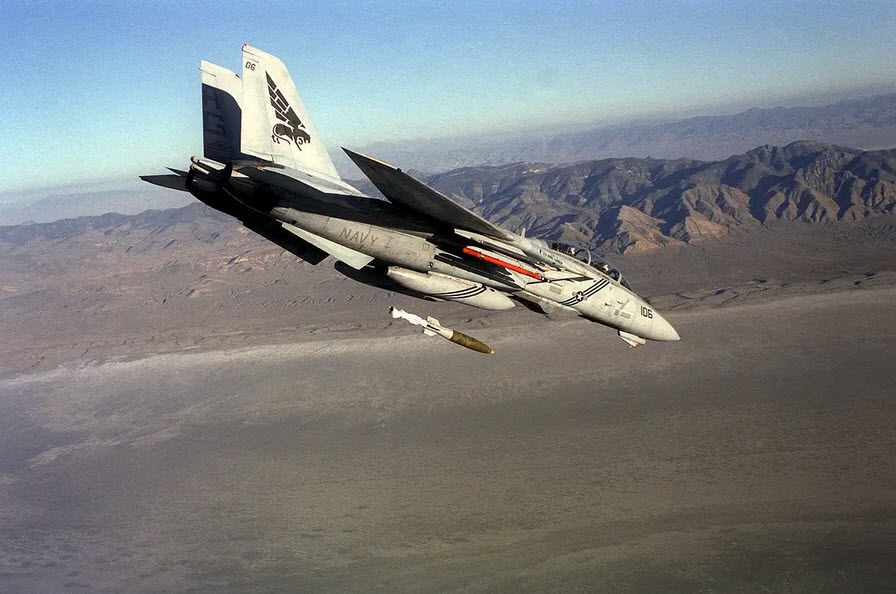
Having a thorough background in delivering ground ordnance and weaponeering certainly made for an easy integration into the fighter Ready Room. We former A-6 folks were welcomed and tasked with sharing best practices with the rest of the squadron. But I thirsted for BFM missions more than anything.
Anytime I could get in the air for some high-aspect air combat maneuvering, I was happy. So, I made sure to include an off-target aerial engagement scenario at the end of the bombing hops whenever I could get away with it.
The age of the Intruder had come and gone
The newest jets I ever flew in the Navy were Intruders in VA-155. We began receiving newly winged SWIP (System Weapon Improvement Program) jets as soon as I checked in on board. Many had come right out of the factory, then diverted into the program to upgrade them with new wings and digital integration. I flew jets that had barely ten hours on them, with none of the paint worn off and all of the labels for the buttons and switches still visible.
Yet even with the upgrade in capabilities, the Intruder was not survivable in the modern battlespace. With the advent of the newest Russian SAM systems, the sanctuary of low-flight was removed. The Intruder could carry a massive bomb load, but modern warfare demanded precision over quantity. Anyone could carry LGBs at that point and the introduction of GPS-aided JDAM made delivering ordnance precisely in any weather almost as simple as entering GPS coordinates.
The mission the Intruder had been designed for and had excelled at, all weather, day/night, low-level delivery of tons of ordnance, had disappeared.
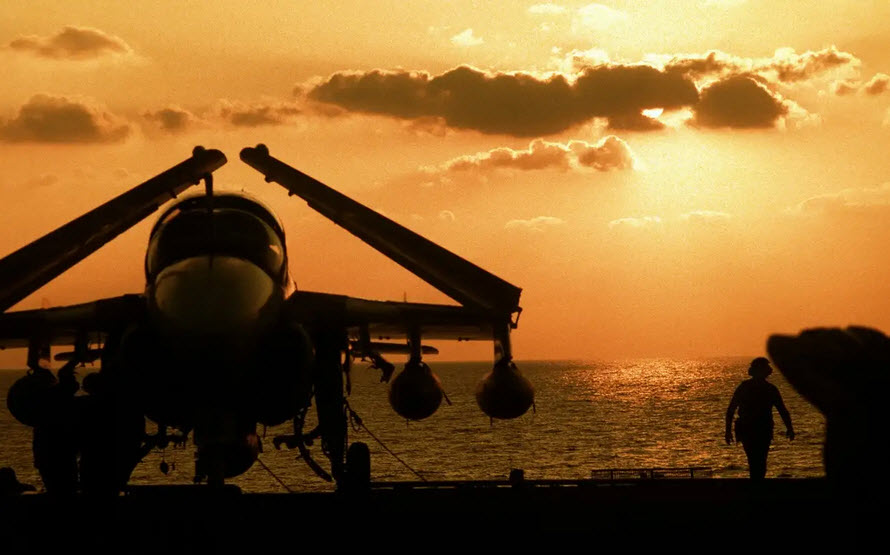
A huge thanks to Paco for sharing his incredible experiences with us. And make sure to pick up a copy of his new book, Lions Of The Sky.
Do you want more?
I have more in my Happiness Index under my Aviation Sub-Index here…
Life & Happiness.
Articles & Links
You’ll not find any big banners or popups here talking about cookies and privacy notices. There are no ads on this site (aside from the hosting ads – a necessary evil). Functionally and fundamentally, I just don’t make money off of this blog. It is NOT monetized. Finally, I don’t track you because I just don’t care to.
To go to the MAIN Index;
Master Index.
- You can start reading the articles by going HERE.
- You can visit the Index Page HERE to explore by article subject.
- You can also ask the author some questions. You can go HERE .
- You can find out more about the author HERE.
- If you have concerns or complaints, you can go HERE.
- If you want to make a donation, you can go HERE.
Please kindly help me out in this effort. There is a lot of effort that goes into this disclosure. I could use all the financial support that anyone could provide. Thank you very much.

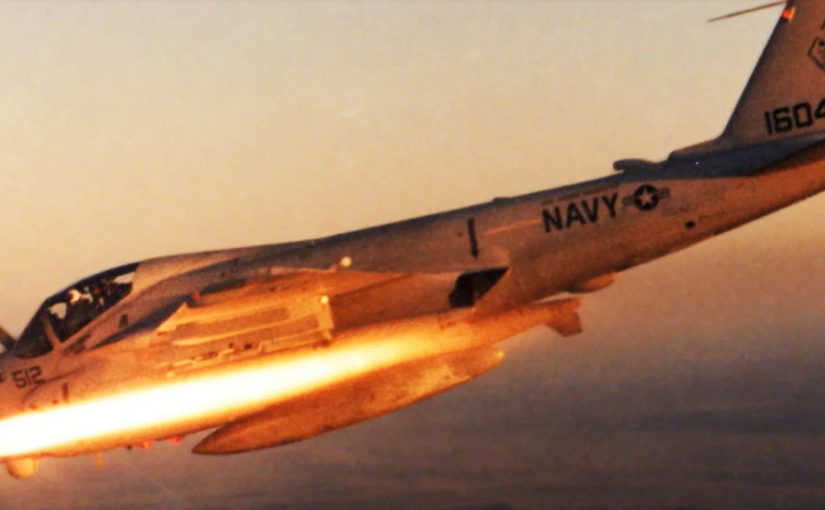

Back when I was a kid and young, dumb and naive, I enjoyed playing a lot of the US fighter jet sims, especially my favorite was the F-22 by DID
https://www.youtube.com/watch?v=tgXAsjCEBiA
Reminded me of Stephen Coonts fiction novel Flight of the Intruder.
Btw, below is the link to the original write up on Top Gun, which later on inspired the (Tom Cruise) movie.
http://www.topgunbio.com/top-guns-by-ehud-yonay/
I well remember those aircraft during my two weeks ACDUTRA (active duty for training) while a US Naval reservist 500 miles off the west coast of California. I was on the Big E at the time, 1987,1988 and they flew those birds non stop, day and night. Thanks MM for presenting this great story. Naval aviators are a special breed indeed.